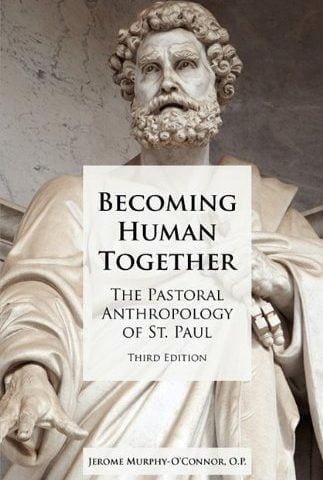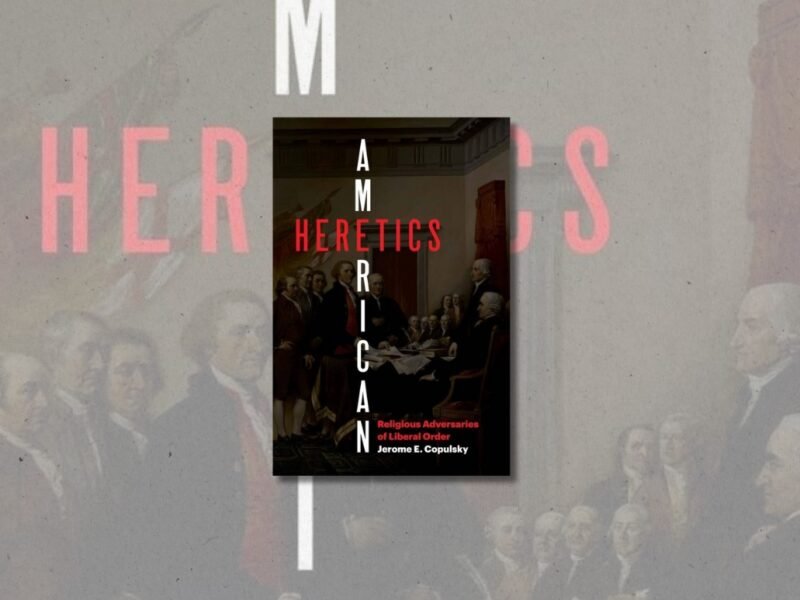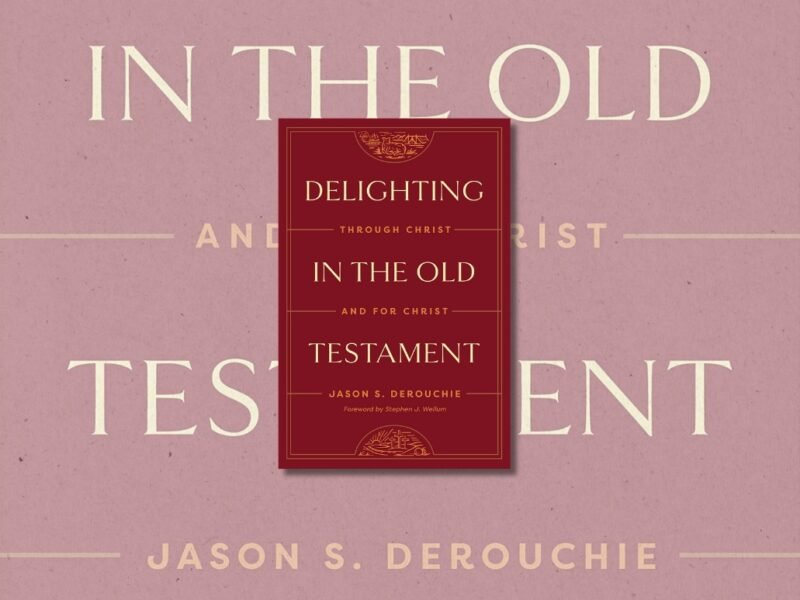I first read Becoming Human Together: The Pastoral Anthropology of St. Paul for a class on the Apostle. The discussion of anthropology was important in the parish where I was serving at the time and I was hoping to find an entry that could contribute to a more classical Anglo-Catholic understanding of the human person. Further, I found the title interesting on two levels: “Becoming human together” sounded Thomistic and “the pastoral anthropology of St. Paul” sounded helpful on a pastoral level.
The book was written by Jerome Murphy-O’Connor (1935-2013), a Dominican Roman Catholic priest who taught New Testament at Ecole Biblique in Jerusalem and specialized in the Pauline epistles. Becoming Human Together was published in 1977.
O’Connor begins with the observation that “All need liberation.” His goal, then, is to establish a liberating anthropology that frees us from the society “that moulds us despite ourselves to its own image.” Manumission occurs when we understand that Paul’s anthropology is built entirely on his theology of Christ. So, to prove his point, he splits the book into three sections: Paul’s Christological anthropology (or his anthropological Christology), an investigation into society and its “structures of inauthentic existence,” and finally an investigation into the community of the Church which contains the “structures of authentic existence.”
In the first section, Murphy-O’Connor seeks to define Paul’s anthropology based on the Apostle’s Christology. In the opening chapter, he attempts to reconstruct Paul’s knowledge about Christ, isolating three main streams of knowledge: the Pharisaic tradition, his conversion experience, and the early Christian community. As a Pharisee, Paul would have been familiar with Christ, specifically, our Lord’s “laxity” in eating with sinners, opposition to the excessive teachings of the Pharisees, his claim to have a special relationship with God, and the early Christian belief in a resurrection of the dead. The second stream of knowledge for Paul was the paradigm-shifting Damascus Road encounter. While O’Connor casts aspersions on whether this was a real event or merely the result of stress stemming from the intense anger directed against Christians, he does succinctly summarize the result of the experience for Paul: Paul’s encounter with Christ afforded him a more intimate knowledge of the person and mission of Jesus and opened to him the possibility of salvation to the Gentiles. The final stream of knowledge where Paul would have learned more about Christ is in contact with early Christian communities (see Gal 1:18 where he met with St. Peter or 1 Col 15:3-7 where he mentions 500 witnesses to the resurrected Christ). It also appears he was aware of some proto-Gospel oral traditions, as evidenced by 1 Corinthians 9 where he alludes to what is now Luke 10’s teaching on the theme of supporting pastors. Further, the agrarian imagery employed by Paul may have been drawn from the parables of Christ. So Paul would have had substantial knowledge of Christ from at least three important sources: his pre-conversion background as a Pharisee, his own conversion experience, and his engagement with the wider Church.
Given Paul’s diversity of knowledge about Jesus, he placed Christ at the very center of his theology, making him the beginning and end of all things, including his understanding of humanity. Murphy-O’Connor is critical of contemporary Christological experiments which first seek to understand humanity in order to understand Christ. This is backward for him; in order to understand humanity, we must first know Christ. To be human, according to Murphy-O’Connor, is to be a creature. When one is aware of our creaturehood, we are aware of the existence God wants us to have. Adam was what God initially intended humanity to be, but, as fallen creatures, we cannot ascertain what that actually means. So, Paul casts Christ as the new Adam in 2 Corinthians 4:4-6 where he is the Image of God and has the glory of God, both aspects of the Edenic Adam. By assuming this role, Christ then becomes the true and essential nature of humanity, particularly in his death which has meaning in its sacrificial and empowering modes. In short, where Adam is the archetype for fallen humanity, Christ is the criterion for a re-created humankind.
Given Christ’s role as the measure of humanity, the question becomes “How is Christ related to God?” More specifically, Did Paul think Christ was actually divine? Murphy-O’Connor begins with a suspect reconstruction that the Christianity which existed at Paul’s conversion preceded the high Christology that would mark the later tradition. Further, as a rabbi, O’Connor posits that Paul would have vigorously maintained monotheism with every fiber of his being. To support his hypothesis, he turns to Romans 9:5 and advocates a contested reading. Compare O’Connor’s translation to that of the RSV’s:
O’Connor’s reading: “They are Israelites…to them belong the patriarchs, and of their race, according to the flesh, is the Christ. God who is over all, (be) blessed for ever. Amen.”
KJV: “Whose are the fathers, and of whom as concerning the flesh Christ came, who is over all, God blessed for ever. Amen.”
The traditional translation of the verse as represented by the KJV assumes the divinity of Christ, but the contested reading emphasizes Christ’s Jewish identity. O’Connor uses this interpretation to deny that Paul would have considered Jesus divine or pre-existent, and concludes that “no other passage in Paul’s letters necessarily implies that Christi s God. In fact, Paul explicitly states that Christ is subordinate to God.”
So, if Christ is not God to Paul, what is he? He is the authentic human. Such authentic humanity evokes two reactions from others: either it empowers them to become fully human themselves or the other fails to recognize authentic humanity and remains in a kind of “sub-human” state. These categories are based on existentialism, which Murphy-O’Connor believes has a lot in common with Paul. Existentialists define a person as “an entity which can give itself different orientations by means of the choices it makes.” Those choices are impeded by the Fall, making authenticity difficult to realize because people are “dead” (in the sense that they do not naturally love as they should) cannot help themselves. So, the task of the Christian is to bring the creative love of God to others in community (aka the Church).
In the second section of the book, titled “Society,” Murphy-O’Connor attempts to explain where Sin comes from and, subsequently what teaches us to be inauthentic selves as opposed to authentic selves. To answer these questions, he shifts his focus away from the individual: “by Sin Paul means something other than the personal sins of individuals…Sin is a symbol.” It is not a symbol for Satan or evil, but an inauthentic mode of existence, a corroding pollution from a corrupt environment. The pollution of Sin is manifest in society through various sins listed by Paul throughout his corpus, like covetousness, external religious observations, obedience to the law, and can be applied to our modern world in its bureaucratic-technological mechanisms and egocentric isolationism.
The final section of the book discusses the Church and how it is instrumental in delivering us from the death brought about by Sin. Living in a community centered around the God who has made us alive by following Christ is the only way we can be liberated to realize our authenticity. This liberation occurs through imitatio Christi within community, per 1 Corinthians 11:1 (RSV): “Be imitators of me, as I am of Christ.” We enter this community through baptism, an eschatological act that removes the formative pressure of Sin on the individual. So, the mark of this community is the opposite of society. Where society locates the individual as the primary locus of being and, therefore shows themselves to be inauthentic, the power of the Spirit manifests itself through the community. Therefore, a healthy community that holds Sin at bay is the mark of authenticity.
Murphy-O’Connor’s contribution to Pauline anthropology has aspects that are helpful but, overall, the book falls short. However, the positives should not be overlooked. Murphy-O’Connor was critical of the popular mode of doing Christology in his day on the basis that it was a backward methodology. That methodology was interested in establishing first what it means to be human and then fitting Christ into that box. To use the approach of Susan Grove-Eastman, who is drawing from Martin Buber’s I-it and I-thou paradigm, those methods advocated third-person approaches to anthropology where humanity is objectified and distanced from the subject. O’Connor’s strength lies in collapsing his anthropology into Christology, embodying the second-person perspective. He begins with fallen humanity’s encounter with the Christic Thou, presupposing that in such relationality, we might better understand both Christ and ourselves.
In a related way, knowing Christ as the criterion for humanity compliments Michael J. Gorman’s idea that the cruciform kenosis of Christ is the primary mode for understanding God. Gorman does Christology “from above,” looking at Christ and deducing that this is the very definition of God while O’Connor does Christology “from below,” using Christ as the exemplary human. Gorman would most likely approve of Murphy-O’Connor’s starting point as he calls the cross an anthropophany in Participating in Christ: Explorations in Paul’s Theology and Spirituality. From a classical Christian perspective, both points of emphasis are necessary. Both Gorman and O’Connor keep cruciformly central. Jesus, in choosing to die, shows us a mode of existence characterized by sacrifice out of love. This is a love that lets-be, not in the sense of standing away from someone or ignoring them, but rather empowering them, literally letting them be, helping a person into the full realization of their potentialities for being.
Murphy-O’Connor mirrors Susan Grove-Eastman’s understanding of the individual as embedded in a larger social structure. He states, “All individuals are born into a society which marks them. This society is a product of its past and a cause of the future. Those who are marked cooperate because by acting in conformity with the conditioning they have received they reinforce those attitudes which descend to the next generation with increased potency.” To be a human is not to be a self-sufficient being cut off from the rest of humanity. Rather, it is to be enmeshed in social relations by which the individual becomes who they are.
It may make for strange bedfellows but a good portion of what Murphy-O’Connor says about Society versus Community fits well with the underlying pattern of Rod Dreher’s The Benedict Option: A Strategy for Christians in a Post-Christian Nation. O’Connor’s fundamental argument advocates detachment from the grip of a society that molds us despite ourselves to its own image. Dreher’s Benedict Option is a call to live apart from that society through an intentional religious community. In both instances, robust catechesis and intentional community form us in countercultural ways based around love for the other.
That said, there are a number of things in Murphy-O’Connor’s work that need adjustment. To understand creaturehood as humanity’s true definition and Christ as the true human is problematic. Murphy-O’Connor’s conviction on this matter stems from his hypothesis that Paul rejected the divinity of Christ. On a meta-level, the argument falls short. If Jesus was just human and society’s molding of the individual is as powerful as O’Connor argues, it begs the question of how Christ could possibly attain “authentic humanity” in the first place. Was it through divine ordination? In this case, Paul argues for a kind of adoptionism that is ungrounded in Scripture. Further, this does not explain why Paul sees Jesus as worthy of worship and to be invoked in prayer (1 Cor 1:2; Eps 3:20-21; Col 3:16). If Paul was a monotheist and believed Christ was not divine, this is a problematic posture because only God is worthy of worship. Further, Paul uses the word “Lord” to refer to Jesus and in the Septuagint, “Lord” is the substitute for the Hebrew “Yahweh.” O’Connor does not believe this means that Paul thought Christ was divine but merely that early Christians viewed him as their superior. Of course, it could be argued that early Christians viewed him as their superior because they believed him to be divine (Rom 10:13 and 1 Cor 10:26). Further, Paul argues for the pre-existence of the Word (Phil 2:5-11; 1 Col 8:6; Col 1:16-17).
The other major issue with Murphy-O’Connor’s work that he reduces humanity’s problem to “authenticity” and “inauthenticity.” There is a sense in which Murphy-O’Connor is correct: one of the effects of sin is that in our unregenerate state, we do not know who we were truly made to be. However, being “in the sinful flesh” is not just being out of touch with one’s true self; it is being an enemy of God, deserving of his wrath because it is active participation in rebellion against the Creator. It requires justification through faith in Christ’s sacrifice for us and requires God’s work of restoration and reconciliation. While Christ does show us what it means to be truly human, defining that work in existentialist terminology lacks the explanatory power he seems to think it has and we end up with a Paul created in the image of a twentieth-century philosopher like Sartre or Camus rather than as a first-century Jew who had a powerful conversion experience that made him believe in the Son of God.
Finally, the way Murphy-O’Connor deindividualizes sin is problematic. Obfuscating individual responsibility and putting that responsibility on external structures is a partial truth but not a complete one: structures are created by individuals who participate in society. So yes, we need to remember the structural component to sin and St. Paul will not allow us to forget it. However, he will not let us forget individual guilt because he provides answers to our internal angst on account of sin. Structural sin is a posteriori to individual sin because the institutions which perpetuate collective transgressions are made up of the individuals who participate in them.
Becoming Human Together is important because it captures some important dimensions of Pauline thought. Christology and anthropology are inseparable precisely because the eternal Word has stepped into time and space to take on human nature, thereby recreating us. His reading of Paul highlights the cruciform ideal to which the person should be increasingly conformed and reminds us that humanity is a shared, corporate reality. However, at the same time, the book cannot be wholeheartedly embraced because it does not do full justice to Christ’s identity as both human and divine. Further, the corporate reality of being in Christ cannot alleviate the plight of the individual but must contextualize it.







'Book Review: Becoming Human Together' has no comments
Be the first to comment this post!